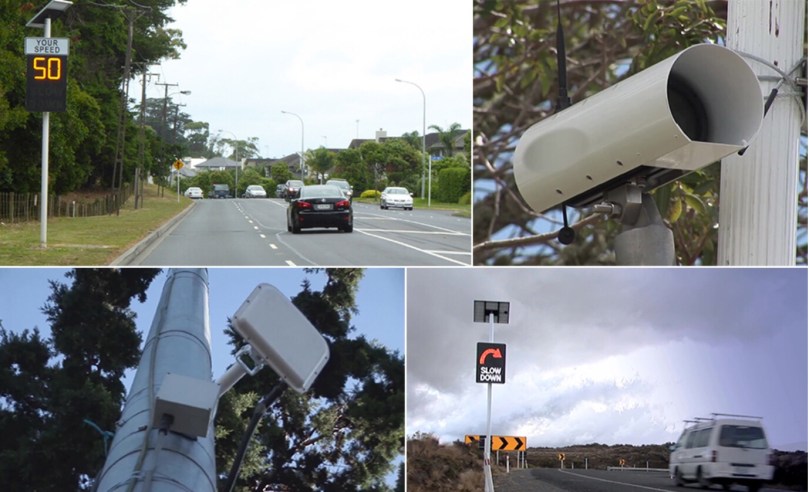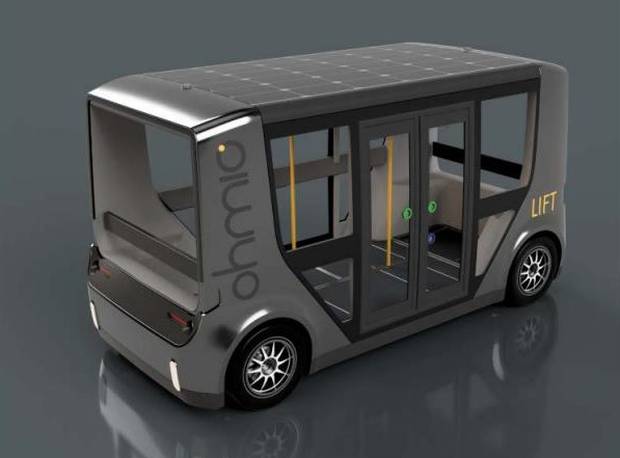Last month I had lunch with Yaniv Gal, the artificial intelligence manager at Ohmio. Yaniv is an interesting character who grew up in Israel and has focused his career on computer vision and machine learning, both in academia and industry. Although a lot of his experience was in medical imaging, in New Zealand he had been working in the fresh produce industry as research program manager at Compac Sorting Equipment which uses machine vision to automatically sort fruit. At Ohmio he’s built one of the largest AI teams in New Zealand.
Yaniv explained that Ohmio emerged from electronic sign provider HMI technologies. HMI has been around since 2002 and has thousands of signs operating throughout NZ. To me it seemed unusual that an electronic sign company would spawn a self-driving vehicle company. There were a couple of core reasons:
- They had some experience using machine vision with traffic: cameras attached to their signs could be used to count traffic in a much more cost effective and reliable way than digging up the road to install induction powered sensors.
- They had experience at installing infrastructure alongside roads. This type of infrastructure could be used to aid a self-driving vehicle along a fixed path

This is a crucial differentiator for Ohmio. They are not trying to compete with the myriad of large companies that are trying to develop level 5 autonomous vehicles: those that can drive without human input in all conditions. This is a difficult problem. Sacha Arnold, the director of engineering at Waymo (owned by Alphabet, Google’s parent) recently said they are about 90% of the way there, but they still have 90% to go. Instead Ohmio are going for the more tractable problem of building a vehicle platform that can navigate along a fixed path. They call this level 4+ autonomy. While this doesn’t have the same broad opportunity as level 5, they believe it is something they can build and that there is still a large market opportunity.

Their first customer is Christchurch airport. This will allow them to prove the concept and refine the technologies. The economics are obvious, with no driver this just ends up cheaper. It’s not just about the money though, Yaniv is confident it will be safer and with electric vehicles, greener. Since our meeting Ohmio have announced a sale of 150 shuttles to Korean Company Southwest Coast Enterprise City Development Co Ltd.
For fixed path navigation the path can be learnt and if necessary additional infrastructure can be added along the path to aid the vehicle in localising and navigating. Most of this is done on the vehicle using a variety of sensors. To establish exactly where it is odometery, GPSs and LIDAR are combined to get a more accurate location, with more redundancy than possible with a single sensor. Combining data from multiple sensors like this is called sensor fusion. Company R&D coordinator Mahmood Hikmet described this in his recent AI day presentation.
Machine vision is used primarily for vehicle navigation and collision avoidance. Here collision avoidance is detecting whether there is an object in the vehicle’s path, or if an object may come into its path. Ohmio use a variety of machine vision techniques, including deep learning. Yaniv’s experience predates the recent rise in popularity of neural networks. He is aware of the few disadvantages deep learning suffers compared to more “traditional” machine learning techniques and so he doesn’t feel like every machine vision problem needs the hammer that is a deep neural network.
Yaniv confessed that it will be a nervous moment the first time the system is driving passengers with no safety driver. However, he is confident it is going to be safer than a vehicle with a driver. We talked about how both of us would be even more nervous using a self driving, flying taxi that Kitty Hawk is testing in Christchurch, even though it should be safer than a ground based vehicle because there are less objects to crash into. We compared this to the fear people felt when elevators were first self-operating, without an elevator operator. It seems like a silly fear now. Maybe the next generation will laugh at our anxiety about self-driving vehicles.
After lunch I told my Uber driver about our conversation. He expressed concern about whether the tech should be developed and the loss of jobs that will come with it. This is an understandable concern given his career (although his masters in aeronautical engineering should see him right). There are too many people working on this type of technology now. If the genie is not out of the bottle, he has his head and shoulders out. The economics are too strong and the world should be a better place with this technology. It’s nice to see a NZ company contributing.

Thanks Shaun, was great meeting you and chat.
LikeLike
[…] can also help with real-world tasks, such as operating vehicles. New Zealand businesses like Ohmio use self-driving shuttles with various machine vision techniques. They still have humans behind the wheel for safety reasons, […]
LikeLike